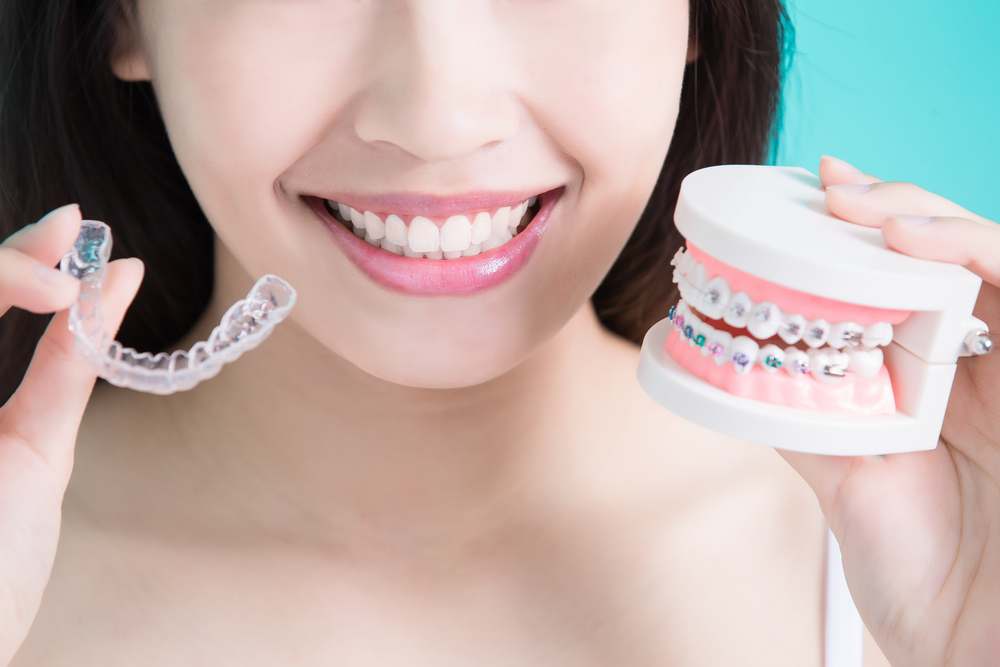For a long time, traditional metal and ceramic braces have been the standard option for correcting misaligned teeth. Invisalign—which uses a series of customized, clear plastic aligners—has offered many patients an alternate solution. Today, many orthodontists recommend Invisalign to their patients instead of traditional metal braces. However, patients are unique in every way, including their orthodontic requirements. At 904 Dental Care in Jacksonville, we may recommend either of these options, and it always depends on a patient’s situation.
Braces vs. Invisalign
When To Use Metal Braces
Orthodontic treatment using traditional braces is typically recommended to patients when they experience one or more of the following:
- Rotated, crooked or crowded teeth
- Severe open bite, underbite or overbite
- Difficulty flossing and brushing
- Mouth breathing, thumb sucking, or Speech difficulties
- Early or late loss of baby teeth
- Delayed development of adult teeth
- Adult teeth coming behind or in front of the baby teeth
- Missing teeth (hypodontia) or extra teeth (hyperdontia)
When to Use Invisalign
Clear aligners—such as Invisalign—are often recommended to patients when they have:
- Relapse from prior orthodontic treatment
- Treatment limited to a few teeth needing minor movements
- Gaps between teeth
- An open bite
- Mild Crooked or crowded teeth
- A crossbite
- An overbite or underbite
Do I Need Braces or Invisalign?
Though there is some overlap in the conditions that both metal braces and Invisalign can treat, it’s essential to understand how these orthodontic problems differ and how each option will affect patients’ lives.
Match Your Budget
At 904 Dental Care, we offer the same competitive, affordable pricing for both traditional orthodontics and clear aligners, so you can choose the option that best matches your budget.
Compliance
Braces are permanently affixed to your teeth, ensuring their continuous operation whether you are conscious of it or not. This facilitates the necessary movements your teeth need. Conversely, the efficacy of Clear Aligners is contingent upon your active participation. They require you to keep them in your mouth for around 22 hours daily to function correctly, placing the responsibility of compliance squarely on you.
Caring for Your Teeth
Traditional metal braces involve a lot of care and cleaning, often with specialized flossing and brushing techniques for hard-to-reach places between brackets.
Because Invisalign is easily removable, there are no complicated cleaning procedures for your teeth or aligners. Patients can clean their aligners by brushing them with a soft-bristled toothbrush with water and soap or use a specialty cleaning solution.
Food Restrictions
The removability of Invisalign means you won’t face any food restrictions—but you will want to brush your teeth after eating messy or sticky foods that do not go away with rinsing your mouth. Metal braces require the complete elimination of certain foods from your diet, such as sticky, hard, or chewy foods.
Comfort
While metal braces are made up of brackets and wires that often poke and irritate the gums, Invisalign is made of durable plastic that won’t poke anywhere in your mouth. Both orthodontic devices may create discomfort in the teeth and jaws as they do their work to align your teeth.
Timeline
For children, braces are often the preferred option due to compliance. The treatment usually goes between 6 months and 1.5 years. For teenagers and adult orthodontics, both Invisalign and traditional braces require between 1 to 2 years of treatment most of the time.
Braces and Invisalign in Jacksonville
Are you or your child in need of orthodontic solutions? Contact us today for a complimentary orthodontic consultation to learn which treatment option is best for you and what to expect.

